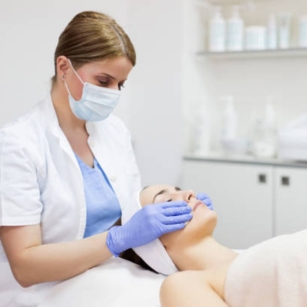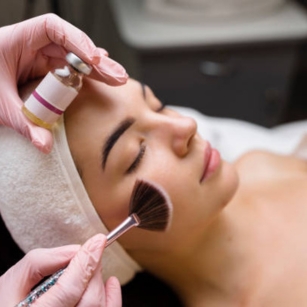
- By Dr. Ravali Yalamanchili
- 2024-05-27
Diabetes is one of the lifestyle disorders, a chronic condition characterised by high blood sugar (glucose) levels. It is an outcome of either insufficient insulin production by the pancreas or ineffective use of insulin by the body. Insulin is a blood glucose regulatory hormone. This condition can impact an individual’s physical health which includes skin health. The most common is skin rash caused by diabetes.
Our skin is the largest organ of our body and so has a role in major functions like protection from the sun’s UV rays, injury, and infections. Some diabetics experience skin problems when they have uncontrolled blood sugar levels. There are few skin conditions known to be linked with diabetes. In this post, we will be learning whether diabetes has any connection with a skin rash.
If so, we will be learning about its symptoms, causes, treatment, and prevention. Keep reading to learn more about diabetes and skin rash with the best skin doctor in Hyderabad at Neya Dermatology and Aesthetic Clinic.
Can diabetes cause skin rash?
Skin rash like acanthosis nigricans is one of the skin concerns that a diabetic is more likely to develop because of high sugar levels in the blood. It can even be a sign of prediabetes, for people who have not been diagnosed with diabetes.
Hyperglycaemia (high blood sugar) can cause dehydration, leaving the skin dry and more susceptible to skin issues like skin rash. It even impacts blood circulation and the natural healing of the injured or infected skin.
For all those who are on diabetes medication, an appearance of skin rash may indicate that the current treatment is not able to lower blood sugar levels effectively. Therefore, there is a need to consult the treating doctor for review who may bring in changes in the medication and treatment plan for diabetes.
What is diabetes rash?
Skin rashes that develop in people with type 1 or type 2 diabetes are called diabetes rashes. It is a temporary condition that may resolve with the management of blood sugar levels.
How to know that a skin rash is caused due to diabetes?
Any change in skin appearance reveals that something inside the body is not as usual. Diabetes-related skin rashes may affect people with or without diabetes. Their appearance is different from other skin rashes and shows variation based on the type and cause of the diabetes rash.
Thinking about what a diabetes rash looks like? Read on about different diabetes rashes. Below are the signs or symptoms of skin rashes to watch out for if healthy or have diabetes.
Skin rashes causing conditions affecting diabetics:
- Diabetes-related dermopathy- In this condition, the patient’s skin of the shins develops round, light-brown, harmless scaly patches.
- Necrobiosis lipoidica diabeticorum- This condition causes red, raised, shiny patches with a yellow in the middle on the lower legs' skin. The skin rash may be itchy and painful and is commonly seen in women.
- Digital sclerosis- Type 1 diabetics probably develop this condition where the back of the hands develops thick, hardened, waxy skin.
- Bullosis diabeticorum (blisters)- People affected with diabetes-related neuropathy may develop painless blisters on the back of their hands and feet as well as legs and forearms.
- Diabetes foot syndrome- The trauma on the skin caused by diabetes foot syndrome results in skin ulcers.
Skin rashes causing conditions that can affect anyone, particularly diabetics:
- Acanthosis nigricans- It is a condition characterised by a dark, velvety band of skin, usually on the back of the neck.
- Vitiligo- It is a type of hypopigmentation that type 1 diabetics are more likely to develop. The condition manifests as light or white skin patches that rarely hurt or itch.
- Disseminated granuloma annulare- This condition causes painless but itchy rashes of red, reddish-brown, or flesh color in the form of rings or arcs on the hands, fingers, ears, and feet in diabetes-affected people.
- Eruptive xanthomatosis- This condition causes yellow, firm, pea-sized skin bumps that may itch and be red-circled on the back of the hands, legs, feet, arms, and buttocks. It affects mostly diabetic men with high cholesterol.
- Skin tags- These are tiny, bumps of brown colour, often developing on the skin of the armpits, eyelids, neck, or groyne.
- Lichen planus- This condition leaves itchy bumps of purple colour with or without a white lacy pattern, usually on the skin of the ankles and wrists and sometimes inside of the mouth.
- Acquired reactive perforative collagenous- This condition causes red, itchy bumps and affects usually kidney disease patients.
How do dermatologists diagnose a diabetes rash?
Dermatologists in Hyderabad at Neya Aesthetics can help confirm the diagnosis of a diabetes rash by looking at the patient's symptoms, a thorough physical examination, and reviewing the patient’s medical records. Sometimes, dermatologists may order a diagnostic test like a blood test to check for blood glucose levels or a biopsy to rule out other possibilities.
What are the remedies for diabetes rash?
To treat any diabetes rash, a dermatologist for skin rash treatment in Hyderabad suggests addressing its underlying cause while improving the skincare regime and managing blood sugar levels. The treatment varies among patients affected with diabetes rash based on the type of rash.
How to prevent diabetes-related skin rash?
First and foremost, keeping the blood sugar levels in control is recommended by a dermatologist or a healthcare provider. Next is following a proper skincare regime to reduce the chances of getting a skin rash and a wound or infection that is hard to naturally heal.
Some preventive measures include:
- Daily check skin for signs of infections, rashes, redness, or sores.
- Take a shower with lukewarm water and moisturising soap.
- After shower, always pat dry skin with a towel and ensure that in between the fingers, toes, and skin folds water is dried.
- Apply moisturiser after shower while the skin is damp and soft.
- Drink adequate water daily to avoid dehydrating the body and skin.
- If skin has a cut or wound, immediately treat it by cleaning it using mild soap and water and using antibiotics.
Having a skin rash? Rush to top-notch dermatologist at Neya Dermatology and Aesthetic Clinic !
You deserve healthy skin and a dermatologist can help you achieve the same. If you are diabetic or not and develop a skin rash or something unusual, it is crucial to consult a dermatologist to get professional attention for your skin health. Neya Dermatology and Aesthetic Clinic has a leading skin doctor and dermatologist in Hyderabad who can best diagnose and address a diabetes rash.
Content Reviewed and Updated by Dr. Ravali Yalamanchili on 15th July 2024




